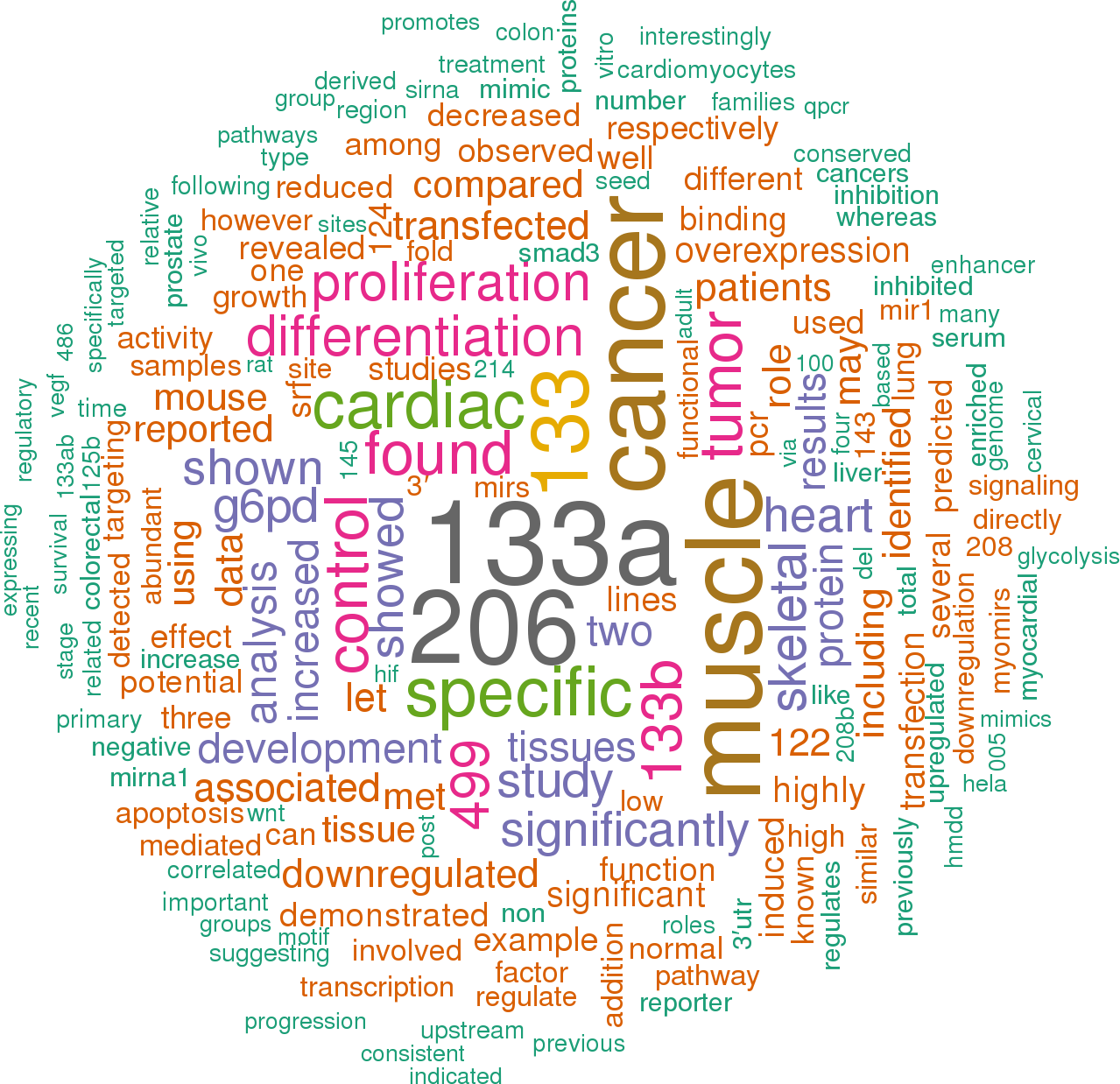Accession
MI0000651
Symbol
HGNC:
MIR1-1
Description
Homo sapiens
hsa-mir-1-1 precursor miRNA
Gene family
MIPF0000038;
mir-1
Summary
Caution, this is an AI generated summary based on literature. This may have errors. ?
MIR1-1 is a type of miR1 in mammals that is mainly related to skeletal muscle development [PMC5424345]. In prostate cancer (PCa), miR-1 pretreatment was used to collect differentially expressed genes (DEGs), and the Gene Expression Omnibus (GEO) and ArrayExpress databases were searched with specific retrieval strategies [PMC6236292]. MIR1-1, along with other cardiac myomiRs, was found to be unperturbed in NKX2-5 knockout cardiomyocytes [PMC6828809]. The expression of MIR1-1, along with other myogenic miRNAs, was established during pluripotent stem cell differentiation into the cardiac lineage [PMC6828809]. MIR1-1 is a muscle-specific microRNA that is produced during the early stage of cardiogenesis [PMC7123062]. It has been implicated in the regulation of cardiac contraction and embryonic angiogenesis [PMC8624534]. SRF activates MIR1-1, along with miR133a, which regulates many mRNAs of MRTF-SRF target genes [PMC9185982]. MIR1-1 has been used as a target for mRNA co-delivery experiments in cardiomyocytes [PMC7832270]. It is embedded in the MIR1-1HG gene and promotes muscle differentiation and expression during myogenesis [PMC5137429]. In colorectal cancer (CRC), MIR1-1 and MIR133A2 had a copy number gain in approximately 7% of patients [PMC4967895]. The relative abundance of URA5 mRNA in samples with knockdown by miR1-1 was significantly lower compared to wild type samples [PMC3530498].
Literature search

517 open access papers mention hsa-mir-1-1
(2693 sentences)
(2693 sentences)
Sequence
6744881
reads,
5442
reads per million, 153 experiments
ugggaaACAUACUUCUUUAUAUGCCCAUauggaccugcuaagcuaUGGAAUGUAAAGAAGUAUGUAUcuca
(((((.((((((((((((((((..((((((((.....)))...))))).)))))))))))))))).)))))
(((((.((((((((((((((((..((((((((.....)))...))))).)))))))))))))))).)))))
Structure
a GC --- a
uggga ACAUACUUCUUUAUAU CCAUa ugg c
||||| |||||||||||||||| ||||| ||| c
acucU UGUAUGAAGAAAUGUA GGUau auc u
A -A cga g
Annotation confidence
High
Do you think this miRNA is real?
Comments
Lagos-Quintana et al. [1] reported the cloning of miR-1b, miR-1c and miR-1d. The mature processed miR sequences are identical apart from the 3' residues (A in mir-1b, C in mir-1c and UU in mir-1d). The 3' residues of both miR-1b and miR-1c conflict with the predicted stem-loop precursor sequence shown here and these sequences are not found in current assemblies of human and mouse genomes. It is suggested that polyA polymerase may add 1-3 nts to the 3' end of the mature transcript (Tom Tuschl, pers. comm.). The common 21 nts of the 3 reported miR sequences have been rationalised here and named miR-1. There are 2 pairs of orthologous putative hairpin precursor structures named mir-1-1 (human MIR:MI0000651, mouse MIR:MI0000139), and mir-1-2 (human MIR:MI0000437, mouse MIR:MI0000652). The mature sequence shown here represents the most commonly cloned form from large-scale cloning studies [2].
Genome context
chr20: 62554306-62554376 [+]
Disease association
hsa-mir-1-1 is associated with one or more human diseases in the Human microRNA Disease Database
| Disease | Description | Category | PubMed ID |
|---|
Mature hsa-miR-1-3p
| Accession | MIMAT0000416 |
| Description | Homo sapiens hsa-miR-1-3p mature miRNA |
| Sequence | 46 - UGGAAUGUAAAGAAGUAUGUAU - 67 |
| Evidence |
experimental
cloned [2], Illumina [3] |
| Database links |



|
| Predicted targets |


|
Mature hsa-miR-1-5p
| Accession | MIMAT0031892 |
| Description | Homo sapiens hsa-miR-1-5p mature miRNA |
| Sequence | 7 - ACAUACUUCUUUAUAUGCCCAU - 28 |
| Evidence | not_experimental |
| Database links |



|
| Predicted targets |


|
References
|




